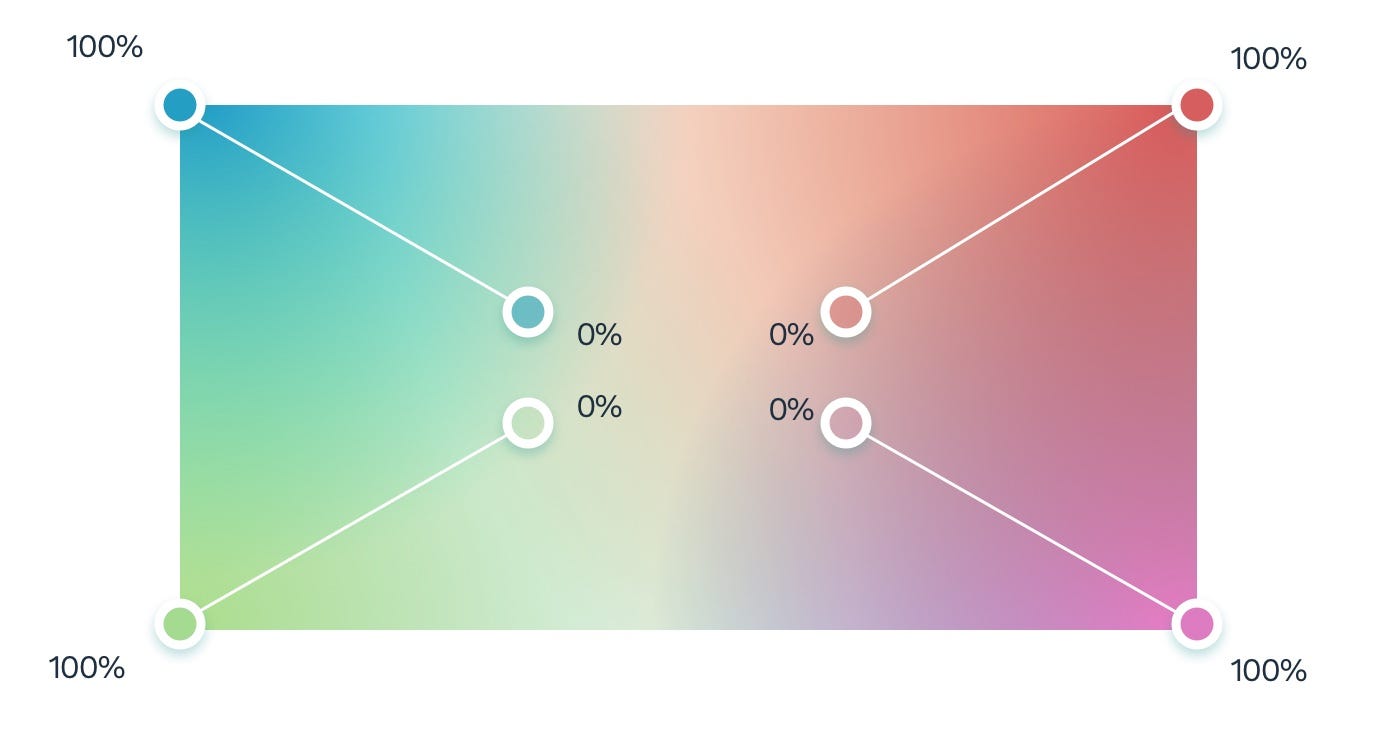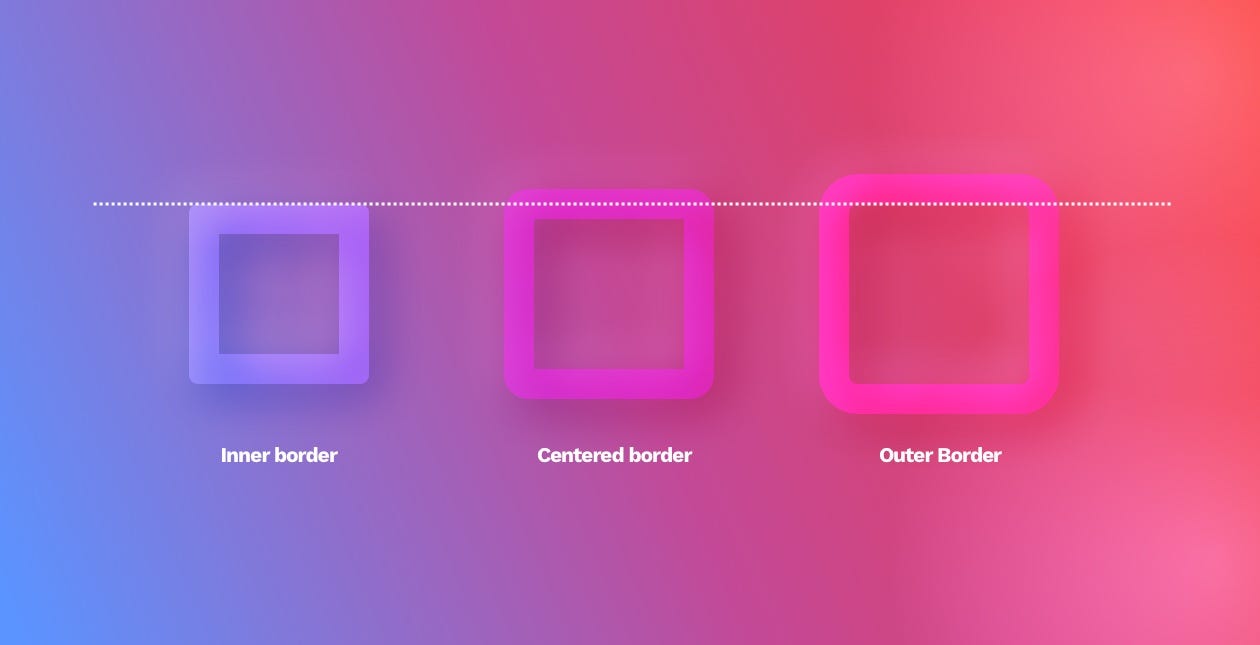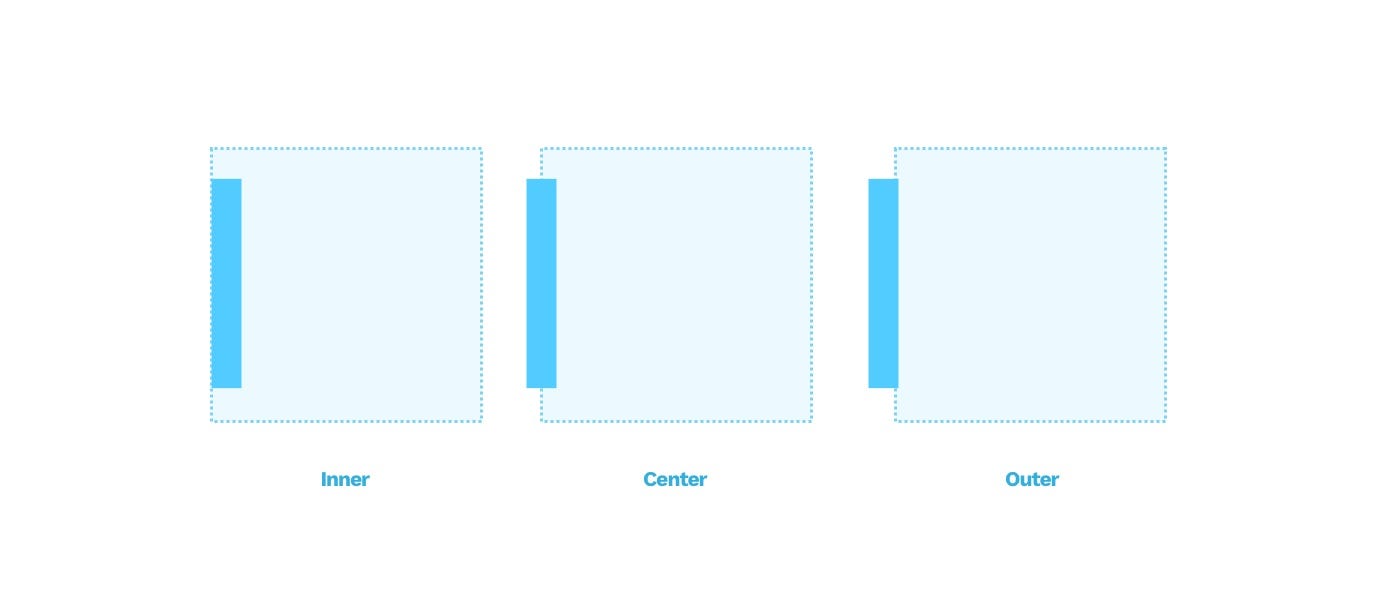ui邊框設計圖
第2部分 (Part 2)
Welcome to the second part of the UI Design shapes basics. This time we’ll cover two of the most essential properties of a shape — fills and borders. This is also a part of the free chapters from Designing User Interfaces.
歡迎使用UI設計形狀基礎的第二部分。 這次,我們將介紹形狀的兩個最重要的屬性-填充和邊框。 這也是《 設計用戶界面 》中免費章節的一部分。
填充 (Fills)
As we have stated in part 1 of this series, most of UI design is about moving rectangles around. So let’s start with a humble rectangle. In most design tools you can draw it by pressing the R key.
正如我們在本系列的第1部分中所述,大多數UI設計都是圍繞移動矩形 。 因此,讓我們從一個不起眼的矩形開始。 在大多數設計工具中,您可以通過按R鍵來繪制它。
When you create a new rectangle, it usually already has a fill attached to it. In most cases it’s simply grey, so you will remember to change the color yourself. Sometimes it has a border too.
創建新矩形時,通常通常已經附加了填充。 在大多數情況下,它只是灰色,因此您會記得自己更改顏色。 有時它也有邊框。
Back in the very early Sketch days it only had an outline, and you could selectively switch off parts of it. But luckily this is now a thing of the past.
在Sketch的早期,它只有一個輪廓,您可以有選擇地關閉它的一部分。 但是幸運的是,這已經成為過去。
The reason for this predefined color is because grey is neutral enough so adding a new shape won’t ruin your already beautifully crafted interface, but yet you’ll still be able to see that new object.
使用這種預定義顏色的原因是,灰色足夠中性,因此添加新形狀不會破壞您本來就精美的界面,但是您仍然可以看到該新對象。

To make it simple fill is another name for the object’s background. It can be a color, a gradient, or a photo. Each of these can also have a different level of opacity (transparency) ranging from 0 (fully transparent — invisible) to 100 (fully opaque, with no transparency).
為了簡單起見,填充是對象背景的另一個名稱。 它可以是顏色,漸變或照片。 這些中的每一個還可以具有不同的不透明度(透明度)級別,范圍從0(完全透明-不可見)到100(完全不透明,沒有透明度)。

Pro tip:
專家提示:
Most of the modern design tools allow you to set opacity with the number keys on your keyboard. Just select an object and press 1 (for 10%), 2 (for 20%) and so on. Pushing 0 will switch between 0% and 100% opacity (so you sometimes need to press it twice).
大多數現代設計工具都允許您使用鍵盤上的數字鍵設置不透明度。 只需選擇一個對象,然后按1(代表10%),2(代表20%),依此類推。 按下0將在0%和100%不透明度之間切換(因此有時您需要按兩次)。
If an object doesn’t have a fill, is also lacking a border or an effect, it won’t be visible in the interface as it requires some defining characteristics to be visible. You’ll still be able to select it, however, move it around, and modify it. It will also still exist in the layers list.
如果對象沒有填充,也沒有邊框或效果,則它在界面中將不可見,因為它需要一些定義的特征才能可見。 您仍然可以選擇它,但是可以四處移動并修改它。 它也將仍然存在于圖層列表中。

填充類型 (The types of fill)
There are three main possibilities of a fill and an absence of one. So you can either have NO FILL, or have a single color, gradient or image backgrounds.
填充和不存在三種主要可能性。 因此,您可以沒有填充,也可以只有一種顏色,漸變或圖像背景。
A while ago patterns were considered another kind of a fill, but in reality they’re just images with a potential to tile them, so they fall into the image category.
前一段時間,圖案被認為是另一種填充,但實際上它們只是具有平鋪潛力的圖像,因此它們屬于圖像類別。
堆積填充 (Stacking fills)

You can also add more than one type of fill to the image. Obviously for this to work the fill layers need to be at least partially transparent, or you’ll only going to see the top one. In this example from Sketch you see an image fill as the base, and a semi-transparent gradient fill on top of it.
您還可以為圖像添加多種類型的填充。 顯然,要使填充層起作用,填充層至少必須部分透明,否則您只會看到最上面的一層。 在Sketch的此示例中,您將看到圖像填充為基礎,并且在其頂部為半透明漸變填充。
多梯度 (The multi-gradient)

You can use this principle to achieve some pretty interesting, organic effects of multiple overlapping gradients like in the example above. To do this, simply create four radial gradients that start at each corner of your shape, and fade out towards the center. Experiment with their size and position until you like the result.
您可以使用此原理來實現多個重疊漸變的一些非常有趣的有機效果,如上例所示。 為此,只需創建四個徑向漸變,這些漸變從形狀的每個角開始并向中心逐漸淡出。 試驗它們的大小和位置,直到您滿意為止。

The most common fills you’re probably going to use however, are color and gradient.
但是,您可能要使用的最常見的填充是顏色和漸變。
邊框 (Borders)
Borders are after the fill, the second styling an object can have.
填充之后是邊框,對象可以具有第二種樣式。

The border is a line that goes around our object. It can go inside (inner border), outside (outer border), or between them (center). Remember that only the inner border doesn’t visually make the object larger.
邊框是圍繞我們對象的一條線。 它可以進入內部(內部邊界),外部(外部邊界)或它們之間(中間)。 請記住,只有內部邊框不會在視覺上使對象變大。

In the example above, the box is 60 x 60 points. The border is 10 points thick. In the middle image, that makes our box larger by 5 points on each side. In the third example, the border is completely outside, making the box larger by 10points in every direction.
在上面的示例中,該框為60 x 60點。 邊框是10點粗。 在中間的圖像中,這使我們的盒子每邊大5個點。 在第三個示例中,邊框完全在外部,使框在每個方向上都擴大了10個點。
邊框樣式 (Border styles)
The border can have different weights (width) in points and can be a dashed or dotted line. We can also fill it with both a color and a gradient.
邊框的磅數可以有不同的權重(寬度),可以是虛線或虛線。 我們也可以用顏色和漸變填充它。

Most of the design tools allow you also to modify the endings and joints of your lines (also known as paths).
大多數設計工具還允許您修改線條(也稱為路徑)的末端和接縫。
The ends can be open, flat, or rounded while the joints can be sharp, rounded, or angled.
末端可以是開放的,平坦的或圓形的,而接頭可以是銳利的,圓形的或成角度的。

The roundness of joints and endings can work well if your interface is generally rounded. If not, then just keep it at the default setting.
如果您的界面通常是圓形的,則關節和末端的圓度可以很好地工作。 如果不是,則將其保留為默認設置。

Thanks for getting this far. I believe it’s worth to sometimes revisit the very basics of a craft and that’s what this series is all about. Borders and fills are an essential part of UI, so it’s good to be able to bend them to your needs every time. In the next installment, we’ll cover all types of Shadows in UI design.
感謝您的幫助。 我認為有時值得回顧一下手Craft.io品的基本知識,這就是本系列的全部內容。 邊框和填充是UI的重要組成部分,因此每次都可以根據需要彎曲邊框和填充是很好的。 在下一部分中,我們將介紹UI設計中的所有類型的Shadows。
If you want to read more about the shapes and UI design in general, check out our 📘 book at www.designingui.com — there are free chapters there as well.
如果您想全面了解形狀和UI設計的更多信息,請訪問我們的design書,網址為www.designingui.com -那里也有免費的章節。
翻譯自: https://uxdesign.cc/ui-design-shapes-objects-basics-fills-and-borders-ed294a17bcbb
ui邊框設計圖
本文來自互聯網用戶投稿,該文觀點僅代表作者本人,不代表本站立場。本站僅提供信息存儲空間服務,不擁有所有權,不承擔相關法律責任。 如若轉載,請注明出處:http://www.pswp.cn/news/275576.shtml 繁體地址,請注明出處:http://hk.pswp.cn/news/275576.shtml 英文地址,請注明出處:http://en.pswp.cn/news/275576.shtml
如若內容造成侵權/違法違規/事實不符,請聯系多彩編程網進行投訴反饋email:809451989@qq.com,一經查實,立即刪除!













的使用...)




——文件操作隱寫、圖片隱寫)